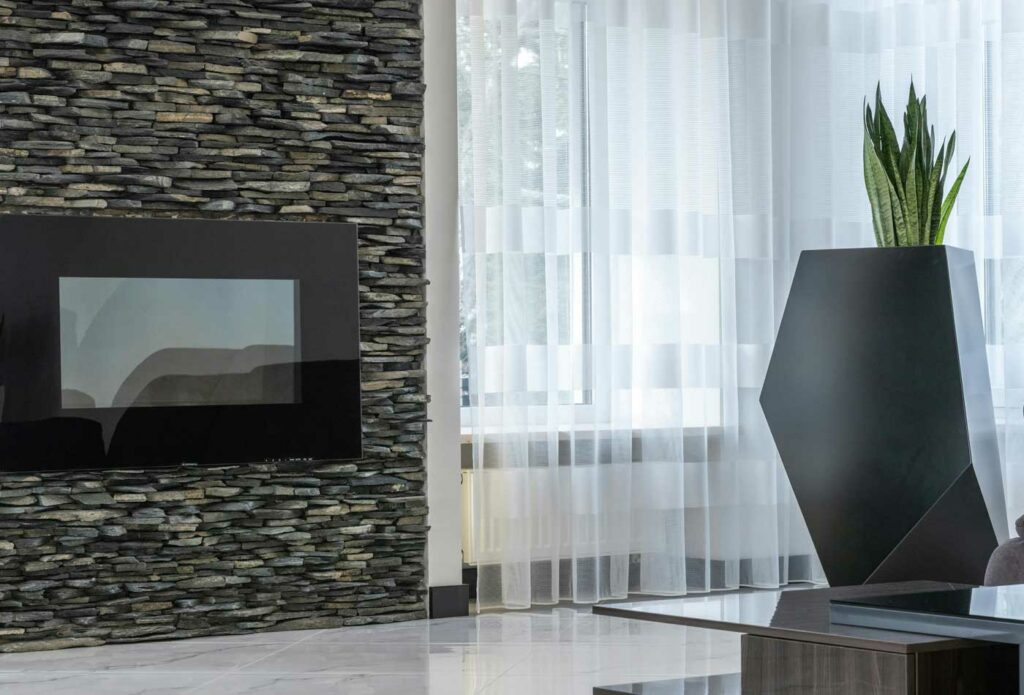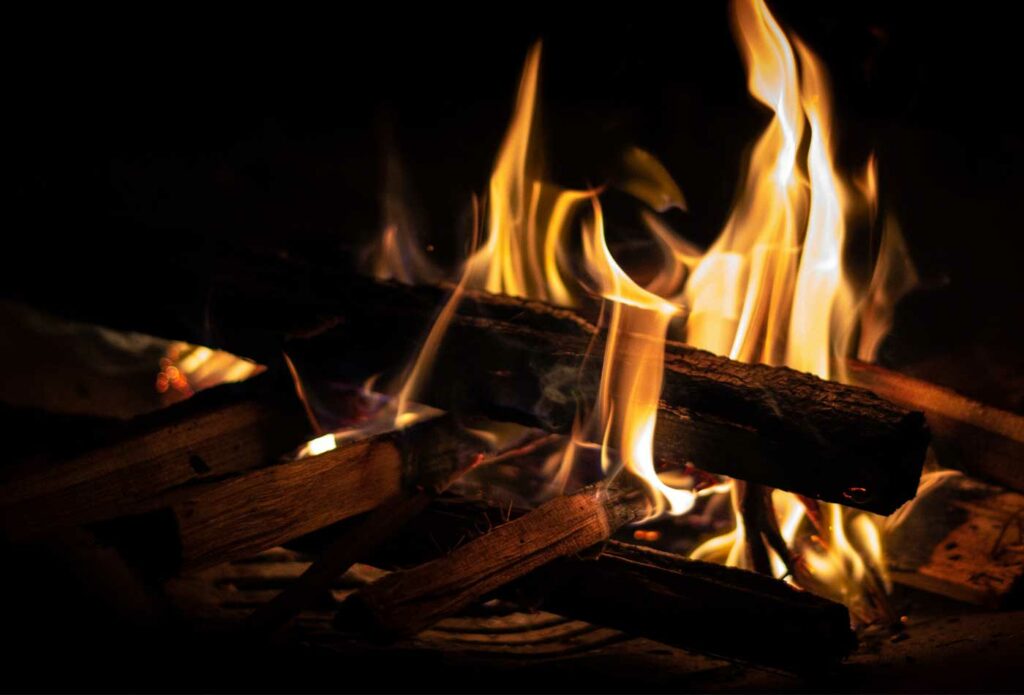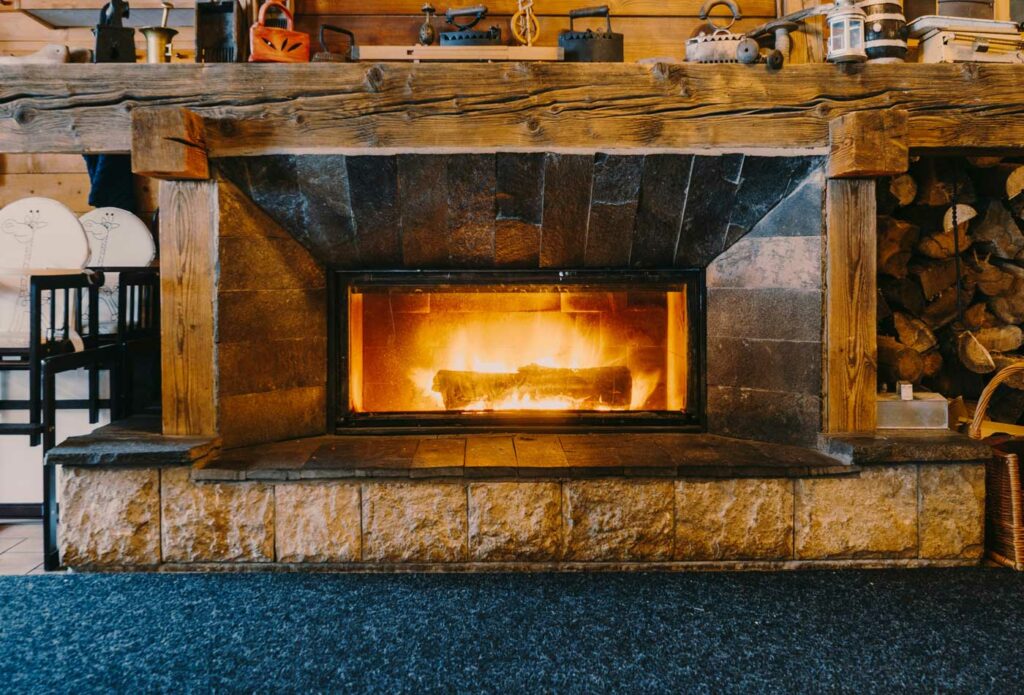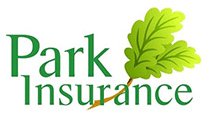Fireplaces add warmth and charm to our homes and provide a cosy retreat during chilly winter evenings. Whether you’re basking in the crackling glow of a wood fire, enjoying the convenience of a gas fireplace, or relishing the simplicity of an electric one, safety should always be a top priority.
In this comprehensive guide, we delve into what’s involved in fireplace safety, covering the benefits of home fireplaces to specific safety tips for wood, gas, and electric variations.
Home Fireplaces and Their Benefits
Home fireplaces have been cherished for centuries, providing not only a source of heat but also a focal point for gatherings. They provide:
- Warmth and Ambiance: Fireplaces create a cosy atmosphere, making your home a welcoming haven.
- Energy Efficiency: Fireplaces can be energy-efficient, and wood fireplaces offer an alternative, cheap heating source while energy prices are high.
- Aesthetic Appeal: Fireplaces often come with unique and interesting designs, adding a touch of elegance to your living space.

Safety Risks Associated with Home Fireplaces
While fireplaces offer numerous advantages, it’s crucial to understand how to use a fireplace safely and always to be aware of potential safety risks:
- Carbon Monoxide (CO) Emissions: Gas and wood fireplaces can produce CO, so you must properly ventilate the area around it.
- Fire Hazards: Improper usage of any fireplace type can lead to fire hazards, putting your home at risk.
- Burns and Injuries: Direct contact with hot surfaces or mishandling of fireplace tools can result in burns, so it’s essential to use fireproof gloves and a fireproof mat in front of the fire.
Wood Fireplace Safety Tips
How to Use a Wood Fireplace:
- Always use dry, seasoned wood to minimise creosote buildup, which creates excess soot.
- Keep the fireplace screen closed to prevent sparks and embers from escaping once lit.
- Ensure your vent is fully open when lighting the fire so smoke leaves through the chimney and not back into your home.
Maintaining a Wood Fireplace:
- Schedule regular chimney cleanings to reduce the risk of chimney fires. This should be done once per year.
- Inspect the damper for proper functionality and ensure it opens and closes smoothly.
- Regularly clear out excess ash from the drawer under the fireplace.

Gas Fireplace Safety Tips
How to Use a Gas Fireplace:
- Follow the manufacturer’s instructions for ignition and flame control.
- Install a carbon monoxide detector near the fireplace to monitor gas emissions.
Maintaining a Gas Fireplace:
- Have a professional inspect and service the gas components annually.
- Check for gas leaks regularly using soapy water on connections, which will bubble if there’s a leak.
Electric Fireplaces Safety
Using an Electric Fireplace:
- These use a lot of energy, so you must avoid overloading electrical circuits using an extension cord. Instead, plug the fireplace directly into an outlet.
- Turn off the fireplace when not in use to prevent overheating.
Maintaining an Electric Fireplace:
- Inspect the power cord for any damage and replace it when necessary. Keep pets which might chew through the cable, like hamsters, well away from the cable.
- Clean the unit regularly to remove dust buildup that can affect performance and become a fire risk over the long term.

Additional Fireplace Safety Tips
- Install Smoke Alarms: Place smoke detectors strategically throughout your home, especially near sleeping areas, to keep you and your family safe in the event of a fire.
- Keep Flammable Items Away: Maintain a safe distance between the fireplace and flammable materials. Don’t stack piles of wood directly next to a wood-burning fire.
- Childproofing: Use safety gates to keep young children away from the fireplace and teach them about the dangers of open flames.
In conclusion, enjoying the warmth and beauty of a fireplace doesn’t mean compromising safety. By following these fireplace safety guidelines, you can create a secure and enjoyable environment for yourself and your loved ones.
So whether it’s the crackle of the wood burner, the convenience of a gas fire, or the simplicity of an electric heater, your fireplace can be a source of comfort without sacrificing safety.
